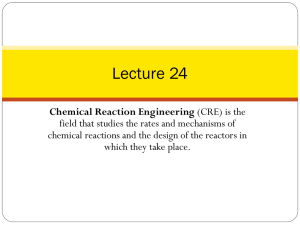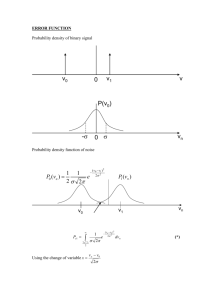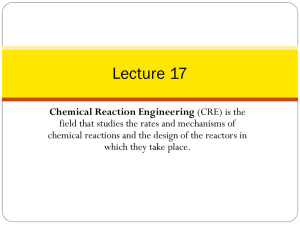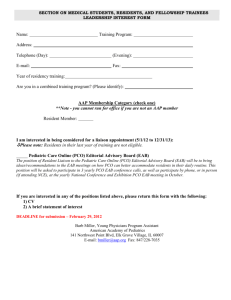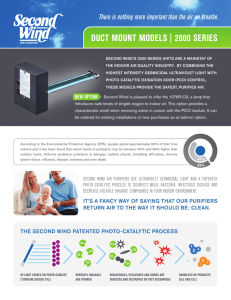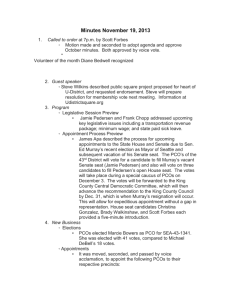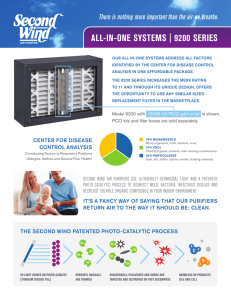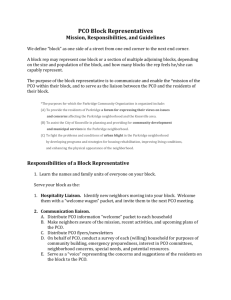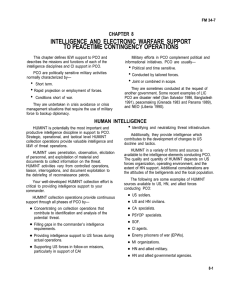Lecture 23
advertisement
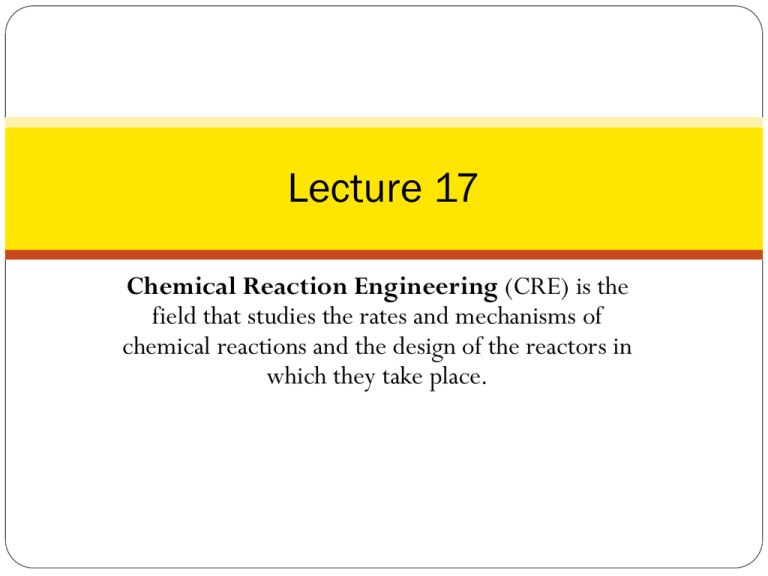
Lecture 17 Chemical Reaction Engineering (CRE) is the field that studies the rates and mechanisms of chemical reactions and the design of the reactors in which they take place. Web Lecture 17 Class Lecture 23 – 3/31/2011 Interstage Cooling Noble Prize 2007 Catalytic Steps 2 A Catalyst is a substance that affects the rate of chemical reaction but emerges from the process unchanged. Catalysis is the occurrence, study, and use of catalysts and catalytic processes. Approximately 1/3 of the GNP of materials produced in the U.S. involves a catalytic process. 3 Different reaction Paths 4 Different shapes and sizes of catalyst. 5 Catalytic packed-bed reactor, schematic. 6 7 Reactions are not catalyzed over the entire surface but only at certain active sites or centers that result from unsaturated atoms in the surface. An active site is a point on the surface that can form strong chemical bonds with an adsorbed atom or molecule. 8 Vacant and occupied sites For the system shown, the total concentration of sites is Ct = Cv + CA.S + CB.S 10 A S A S rAD k A PACv - k -A C AS k A PACV C AS / K A K A k A / k A [atm -1 ] @ equilibriu m : rAD 0 rAD / k A 0 C AS k A PACV C AS k A PACV Ct CV C AS CV K A PACV CV (1 K A PA ) 11 Ct CV 1 K A PACV Ct CV 1 K A PACV C A S K A PACV C A S K A PA Ct 1 K A PA C A S K A PA 1 K A PA Ct 12 C A S CT Increasing T Slope=kA C AS K A PA Ct 1 K A PA Langmuir Adsorption Isotherm PA 13 14 15 16 17 18 19 A B C C S CS PC C rDC k D CCS K DC (10-20) rDC rADC K DC 1 KC rDC k D CCS KC PC C (10-21) Adsorption A S A S Surface Reaction A S B S Desorption BS B S C AS rA rAd k Ad PACv k A CB S rA rS k S C AS k C rA rD k D CBS k B PBCB Which step is the Rate Limiting Step (RLS)? 21 Electrical analog to heterogeneous reactions 22 Collecting information for catalytic reactor design 23 24 Catalytic Reforming Normal Pentane Octane Number = 62 Iso-Pentane Octane Number = 95 25 n-pentane n-pentane -H2 Pt n-pentene n-pentene N 27 0.75 wt% Pt Al2O3 Al2O3 i-pentane i-pentene Al2O3 +H2 i-pentene I Pt i-pentane Isomerization of n-pentene (N) to i-pentene (I) over alumina N 1. Select I a mechanism (Mechanism Single Site) Adsorption on Surface: 28 Al2O3 N S N S Surface Reaction: NS I S Desorption: I S I S Treat each reaction step as an elementary reaction when writing rate laws. 2. Assume a rate-limiting step. Choose the surface reaction first, since more than 75% of all heterogenous reactions that are not diffusion-limited are surface-reaction-limited. The rate law for the surface reaction step is N S S I S S C IS ' rN rI rS k S C NS KS 29 Find the expression for the concentrations of the adsorbed species CN.S and CI.S. Use the other steps that are not 3. limiting to solve for CN.S and CI.S. For this reaction, N S N S rAD From 0: kA C NS PN K N C I S I S rD From 0: kD 30 C IS PI C K I PI C KD 4. Write a Site Balance. Ct C C NS CIS 5. Derive the rate law. Combine steps 2, 3 and 4 to arrive at the rate law: k k s C t K N PN PI K P rN rS 1 K N PN K I PI rN rS 31 k PN PI K P 1 K N PN K I PI HC CO 1994 0.41 3.4 2004 0.125 3.4 2008 0.10 3.4 NO 0.4 0.4 0.14 1 CO NO CO2 N 2 2 NO S CO • S NO • S CO • S C rANO k NO PNO C V NO•S C NO•S K NO PNO C V K NO C rACO k CO PCO C V CO•S K CO C CO•S K CO PCO C V CO • S NO • S CO 2 N • S S rS k S C CO•S C NO•S N •S N •S 33 N 2 g 2S rD k D C 2N•S K N 2 PN 2 C 2V C N•S C V K N PN 2 rS k S C NO•SCCO•S rS k SK NOKCO PNOPCO C 2V C T C V C NO•S CCO•S C N•S C V C V K NOPNO C V KCO PCO C V K N 2 PN 2 34 CV Ct 1 K NO PNO K CO PCO K N 2 PN 2 rS rNO rNO 35 1 K 1 K k k S K NO K CO C 2t PNO PCO NO PNO K CO PCO K N 2 PN 2 kPNO PCO NO PNO K CO PCO K N 2 PN 2 2 2 rNO Neglect kPNOPCO 1 K NOPNO KCOPCO K N 2 PN 2 K N 2 PN 2 rNO kPNOPCO 2 1 K NOPNO KCOPCO 2 rNO kPNOPCO 1 K NOPNO KCO PCO Find optimum partial pressure of CO drNO 0 dPCO PCO 2 1 K NOPNO K CO 38
